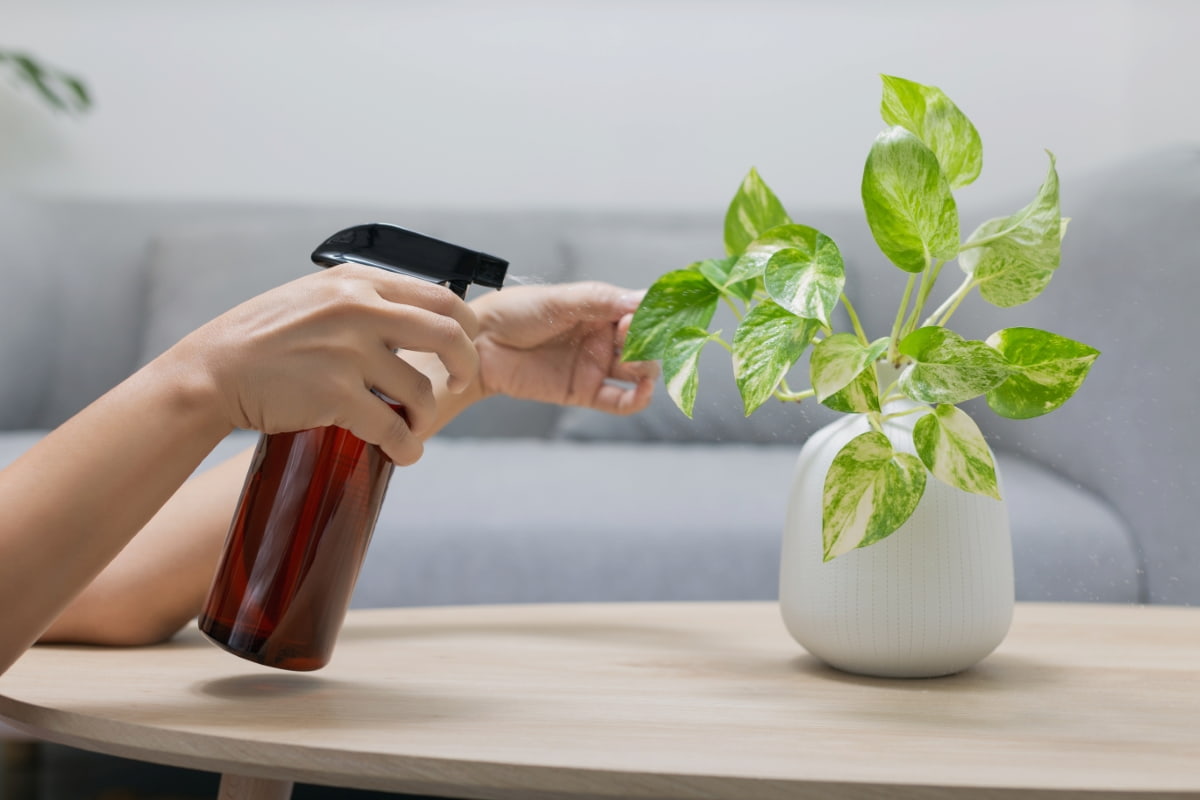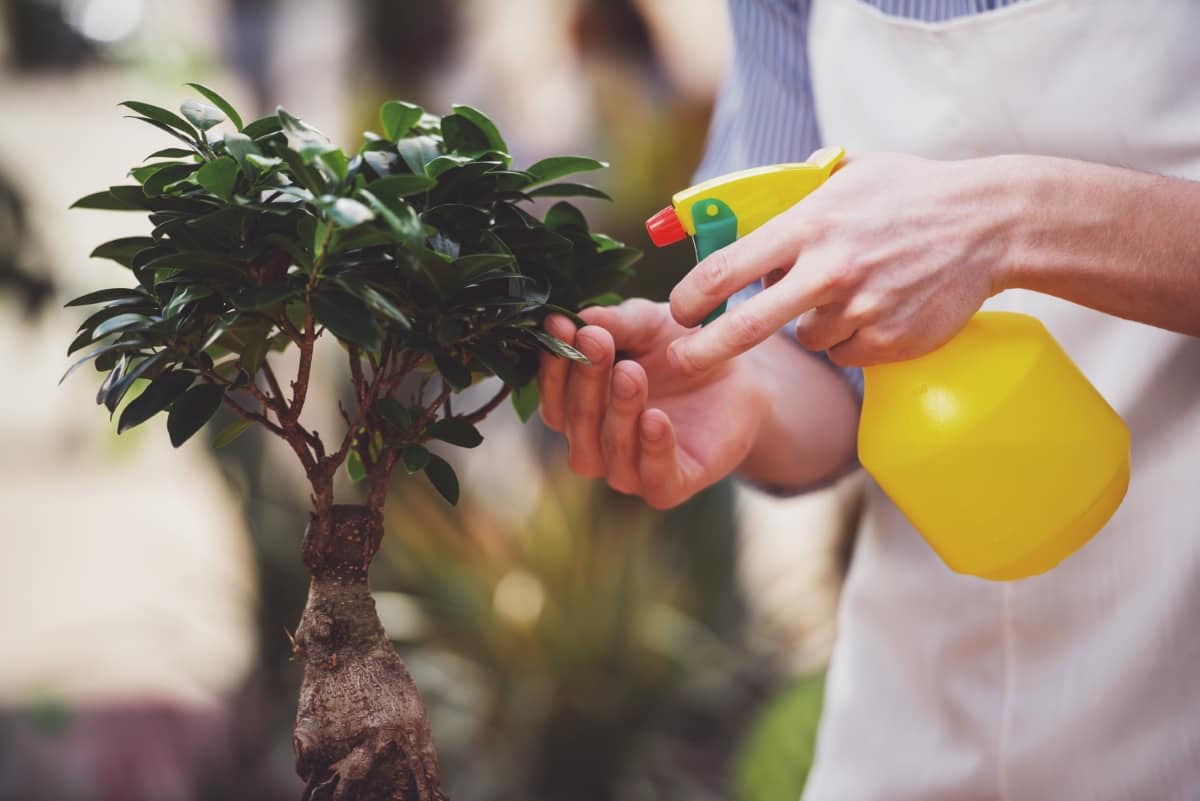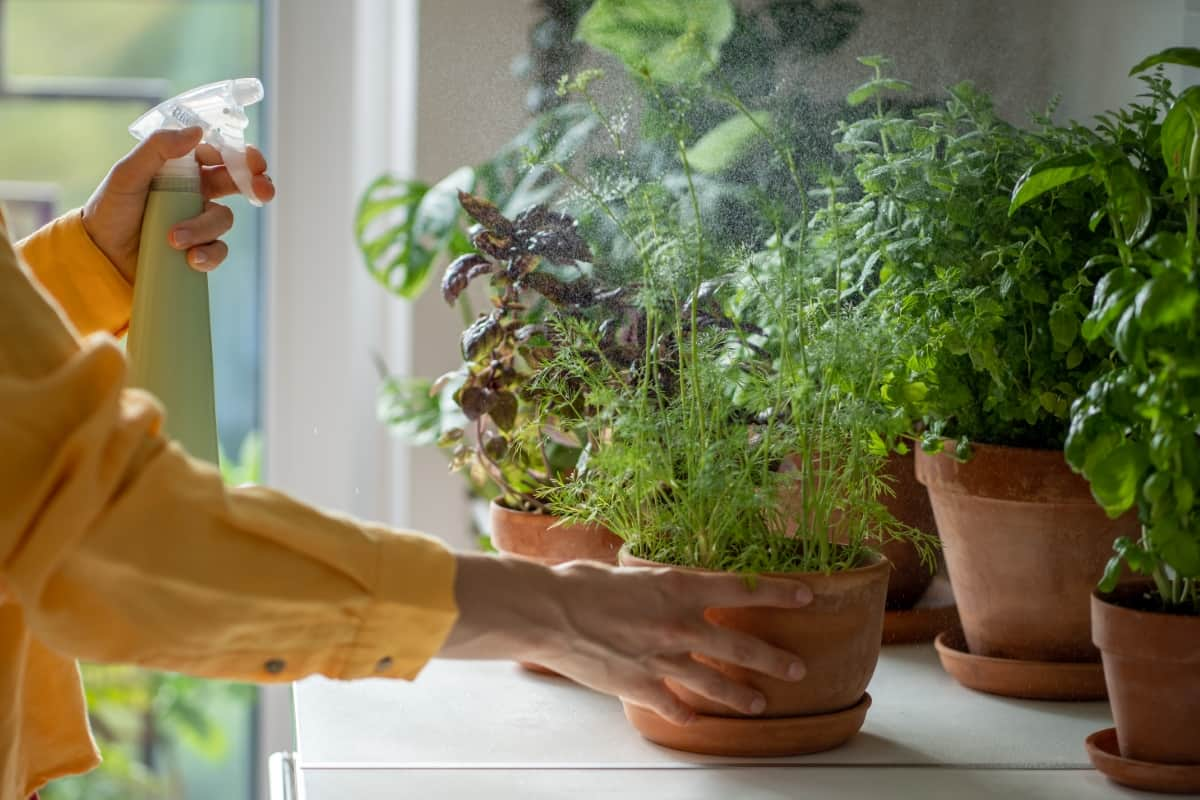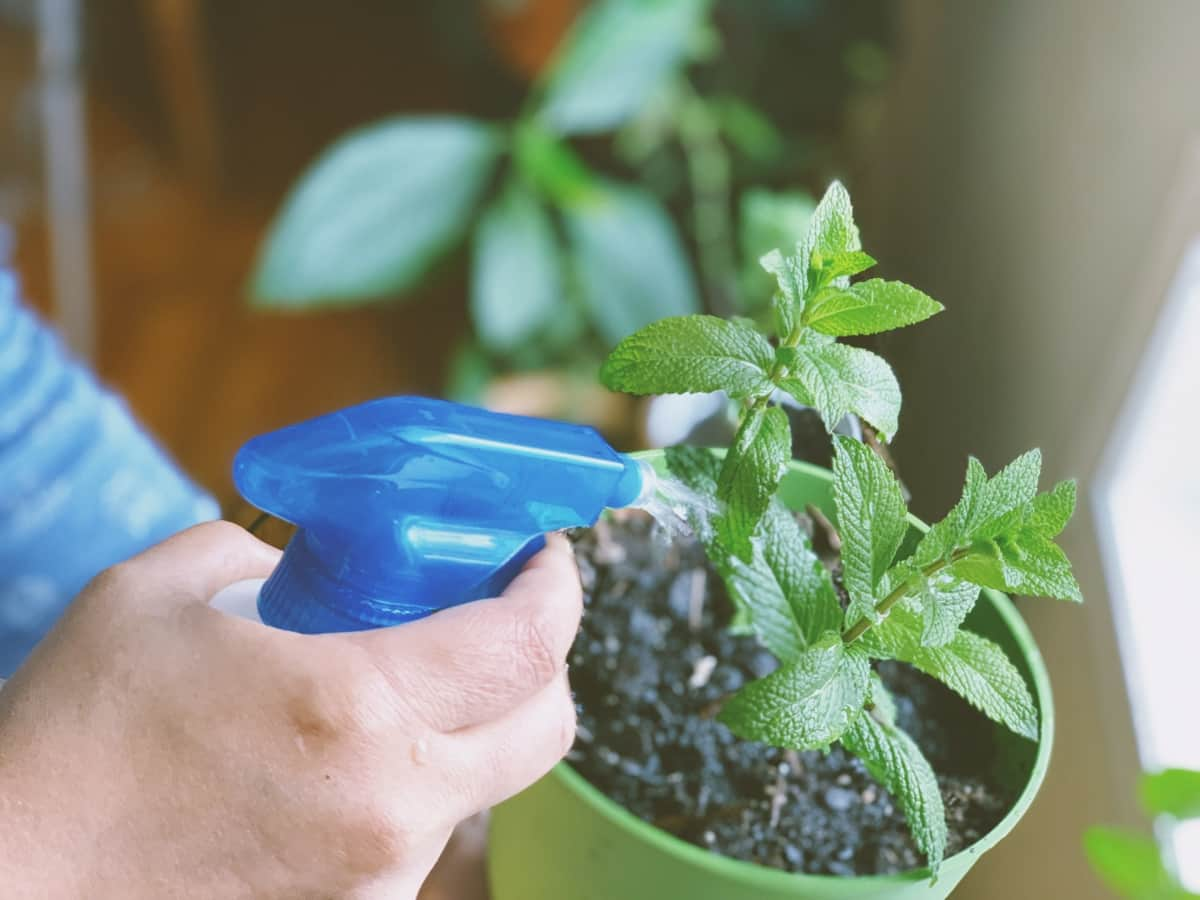Neem oil has gained popularity as an effective solution for controlling pests and diseases in potted plants. Its importance lies in its ability to provide an organic alternative to harmful chemicals, ensuring the health and well-being of your container garden.

How to Use Neem Oil on Potted Plants
Neem Oil and its Benefits for Potted Plants
Neem oil is a natural solution for keeping bugs at bay in your potted plants, and it acts as an effective insect repellent. The benefits of using neem oil in your container gardens are plentiful. Furthermore, neem oil is a powerful antifungal agent. It helps control the spread of fungal diseases like powdery mildew and black spot that can ravage your precious plants. By applying neem oil preventively or at the first signs of infection, you can ensure your plants stay healthy and disease-free.
How to Prepare Neem Oil to Use on Potted Plants
Firstly, make sure you have pure, cold-pressed neem oil. This type of neem oil retains all its beneficial properties and is safe for use on plants. To prepare the neem oil solution on potted plants, mix one teaspoon of neem oil with one quart of warm water in a bottle. Shake the bottle carefully until the ingredients are thoroughly combined. It’s important to note that neem oil has a strong smell, so it’s best to prepare the solution outdoors or in a well-ventilated area. You may also want to wear gloves while handling the mixture. Once your neem oil solution is ready, it’s time to apply it to your potted plants.
How to Apply Neem Oil on Potted Plants
Make sure to dilute the neem oil according to the instructions on the bottle. Neem oil is highly concentrated, so using it undiluted can harm your plants. Next, transfer the diluted neem oil into a spray bottle for easy application. When applying neem oil, start from the top of the plant and work your way down. Pay extra attention to areas where pests are commonly found, such as underneath leaves or in crevices. Be thorough in your application, ensuring that all parts of the plant are covered with a thin layer of neem oil solution. This will help suffocate and repel insects effectively.
Mixing and Dilution for the Right Concentration of Neem Oil for Potted Plants
The right concentration of neem oil is crucial to ensure effectiveness while minimizing any potential harm to your plants. To start, it’s important to note that neem oil is a highly concentrated substance, so it should never be applied directly without diluting it first. Generally, a 1% solution is recommended for most common pests and diseases.
In case you missed it: How to Use Neem Oil in Terrace Garden: Best Way to Get Rid of Bugs Naturally from Terrace Garden

This means mixing one part of neem oil with nine parts of water or another carrier liquid like soap or vegetable oil. When preparing the mixture, always follow the instructions provided on the bottle of your specific neem oil product.
Can Neem Oil Be Used on All Potted Plant Varieties?
Some delicate or sensitive plants may not tolerate the application of neem oil. Certain species, like ferns and orchids, may require milder concentrations of neem oil due to their sensitive nature. Make sure to follow the instructions provided by the manufacturer regarding dilution ratios for different plant varieties. On the other hand, many common houseplants, such as succulents, herbs, and flowering plants, respond well to neem oil treatment. Roses are affected by various pests and diseases, such as aphids and powdery mildew.
By applying neem oil regularly, you can help prevent these issues and keep your roses healthy and vibrant. Fruit trees and herbs grown in containers also benefit greatly from the use of neem oil. Citrus trees, for example, may be susceptible to scale insects or citrus leaf miners. Apply neem oil to control pests without harming beneficial insects or affecting the taste of the fruit. In addition to these specific plant types, many other potted plants can also benefit from regular applications of neem oil.
How Long Does Neem Oil Stay Effective on Potted Plants?
It’s important to note that neem oil is not a quick-fix solution. It works gradually and may take several applications to see significant results. However, once applied, neem oil can protect for up to two weeks. The longevity of neem oil’s effectiveness also relies on weather conditions and watering practices.
Heavy rain or frequent watering can wash away the protective coating of neem oil more quickly. In such cases, it may be necessary to reapply sooner than anticipated. To maximize the effectiveness of neem oil on your potted plants, it’s crucial to follow proper application techniques and maintain regular monitoring. Keep an eye out for any signs of pests returning and adjust your treatment accordingly.
Using Neem Oil in Combination with Other Types of Pest Control Methods
One effective combination is using neem oil alongside insecticidal soap. While neem oil targets and suffocates pests like aphids and mealybugs, insecticidal soap works by disrupting their cell membranes. Together, they provide a double-whammy effect on those pesky intruders. Another great pairing is neem oil and beneficial insects. Many gardeners rely on ladybugs or lacewings to devour aphids and other harmful insects.
By applying neem oil first to deter the pests and then introducing these helpful bugs, you create a formidable defense team for your potted plants. Remember that each pest problem may require different combinations of control methods, so don’t hesitate to experiment until you find what works best for your specific situation.
Some Common Pests and Diseases that Neem Oil Can Control on Potted Plants
Aphids – These insects love to feast on the tender leaves of your potted plants, causing stunted growth and yellowing foliage. Neem oil acts as a deterrent, preventing these pesky bugs from wreaking havoc on your green beauties.
Spider Mites – These arachnids may be small, but they can quickly multiply and infest your potted plants if left unchecked. Luckily, neem oil suffocates these unwanted guests by coating them with its oily residue.
Fungal dIseases Like Powdery Mildew – The antifungal properties of neem oil help combat this unsightly white powder that covers leaves and inhibits photosynthesis. Neem oil also controls some common pests, such as mealybugs, scale insects, whiteflies, and even nematodes.
In case you missed it: How to Use Neem Oil on Cactus Plants: Best Way to Get Rid of Bugs Naturally from Cacti

How to Monitor the Effectiveness of Neem Oil
One way to monitor its effectiveness is by inspecting your potted plants for signs of pest damage or disease progression. Take some time every week to closely examine the leaves, stems, and flowers of your potted plants. Look for any chewed leaves, holes in the foliage, wilting or yellowing leaves, or any other visible signs of pest activity. Additionally, keep an eye out for powdery mildew or fungal growths on the plant surfaces.
If you notice any new pest infestations or disease symptoms despite using neem oil, it may indicate that the concentration needs adjustment or that a different treatment approach is necessary. In such cases, consider reapplying neem oil at a higher concentration or exploring other organic pest control methods.
Safety Precautions to Take when Using Neem Oil on Potted Plants
- Protective Clothing: When applying neem oil, wear long sleeves, pants, gloves, and goggles to protect your skin and eyes from potential contact.
- Avoid Contact with Edible Parts: If you are treating edible plants with neem oil, make sure to avoid spraying the solution onto the fruits or vegetables themselves.
- Follow Instructions: Follow the instructions by the manufacturer on how much neem oil to use per gallon of water or as directed for specific plants.
- Store Properly: Keep your bottle of neem oil tightly sealed in a cool and dark place away from children and pets.
Frequently Asked Questions (FAQ) on Using Neem Oil in Potted Plants
When Should I Apply Neem Oil in Potted Plants?
It’s best to apply neem oil early in the morning or late in the evening when temperatures are cooler, as this reduces any potential leaf burn caused by sunlight interacting with wet foliage.
Is Neem Oil Safe for Potted Plants?
Yes. Neem oil is considered safe for most potted plants when used correctly. However, it’s always a good idea to test a small area before treating the entire plant.
How Does Neem Oil Work Against Bugs?
Neem oil disrupts insects’ hormonal systems, making it difficult for them to feed and reproduce. It acts as both a repellent and an antifeedant, deterring pests from attacking your plants.
In case you missed it: How to Use Neem Oil on Snake Plants: Best Way to Get Rid of Bugs Naturally from Snake Plants

Conclusion
Neem oil has been used for centuries as a powerful insecticide and fungicide. It’s safe to use around humans and pets, making it a good choice for indoor or outdoor potted plants. Using neem oil in potted plants is not only an effective way to get rid of bugs naturally but also promotes overall plant health.
- Beneficial Insects in Pest Management
- Natural Solutions for Pest Control in Flower Gardens
- Types of Fungicides Used in Agriculture
- Common Issues in the Fruit Development Stage of Pomegranate Farming
- Fruit Development Issues in Papaya: Easy Solutions and Treatment
- Soil-Borne Diseases and How to Protect Your Plants
- Practices to Prevent Disease Spread in the Garden
- From Wilted to Thriving: How to Treat Root Rot Naturally in Houseplants
- Natural Remedies to Cure Brown Spots on Fig Tree Leaves